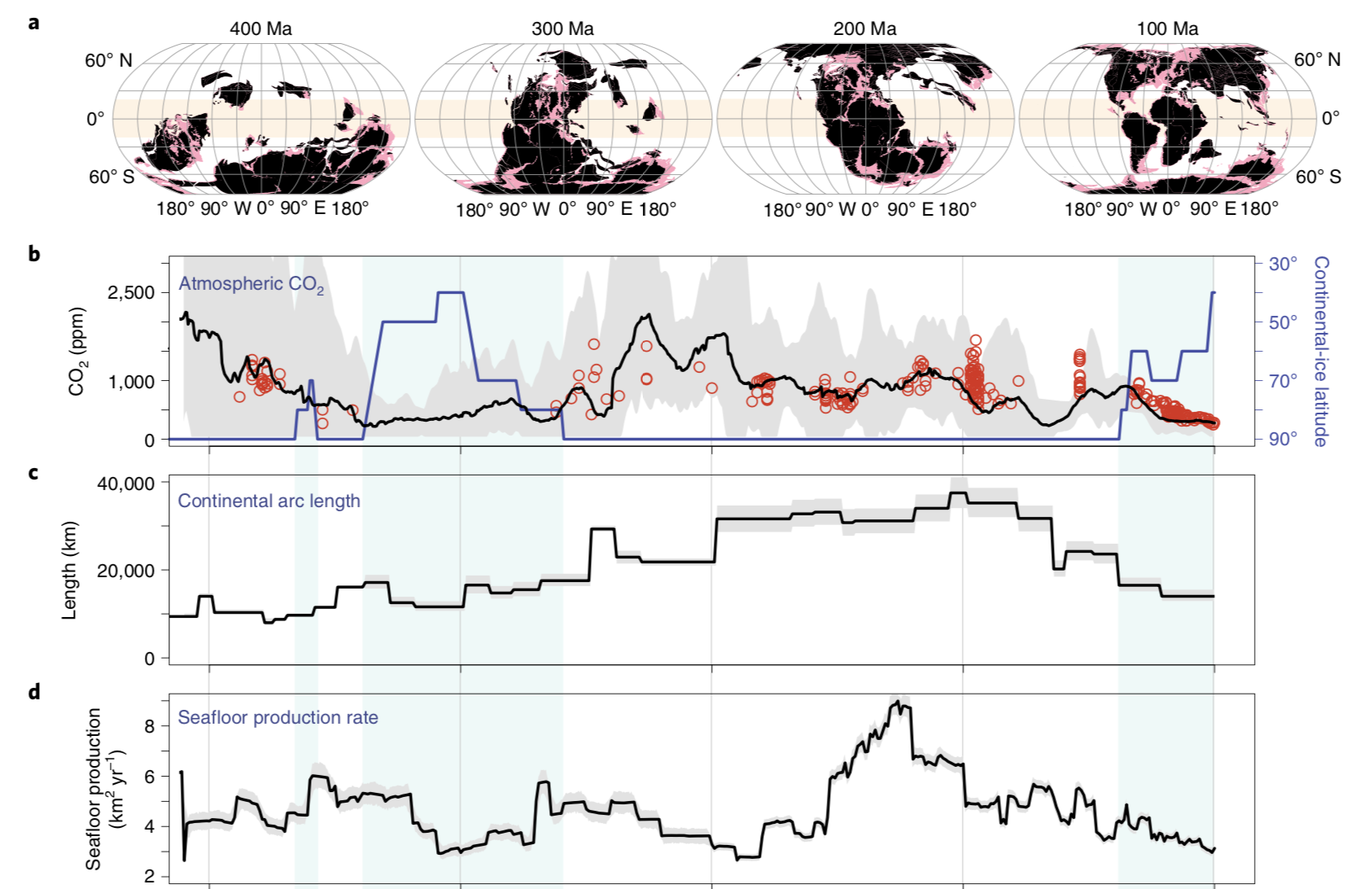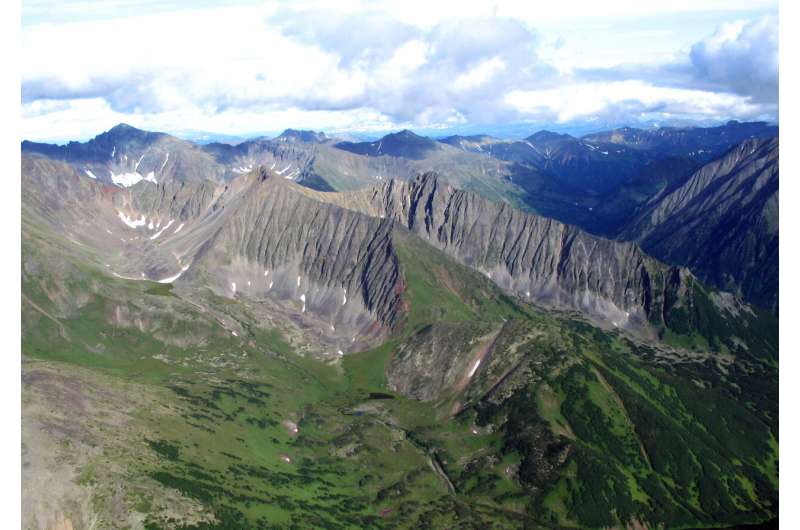
Earth’s plate-tectonic activity regulates the carbon cycle and, hence, climate, via volcanic outgassing and silicate-rock weather- ing. Mountain building, arc–continent collisions and clustering of continents in the tropics have all been invoked as controlling the weathering flux, with arcs also acting as a major contributor of carbon dioxide to the atmosphere. However, these processes have largely been considered in isolation when in reality they are all tightly coupled. To properly account for interactions among these processes, and the inherent multi-million-year time lags at play in the Earth system, we need to characterize their complex interdependencies. Here we analyse these interdependencies over the past 400 million years using a Bayesian network to identify primary relationships, time lags and drivers of the global chemical weathering signal. We find that the length of continental volcanic arcs—the fastest-eroding surface features on Earth—exerts the strongest control on global chemical weathering fluxes. We propose that the rapid drawdown of carbon dioxide tied to arc weathering stabilizes surface temperatures over geological time, contrary to the widely held view that this stability is achieved mainly by a delicate balance between weathering of the seafloor and the continental interiors.
https://www.nature.com/articles/s41561-021-00806-0
Gernon, T.M., Hincks, T.K., Merdith, A.S. et al., 2021, Global chemical weathering dominated by continental arcs since the mid-Palaeozoic. Nature Geoscience, published online 23 Aug 2021. https://doi.org/10.1038/s41561-021-00806-0
![]()

